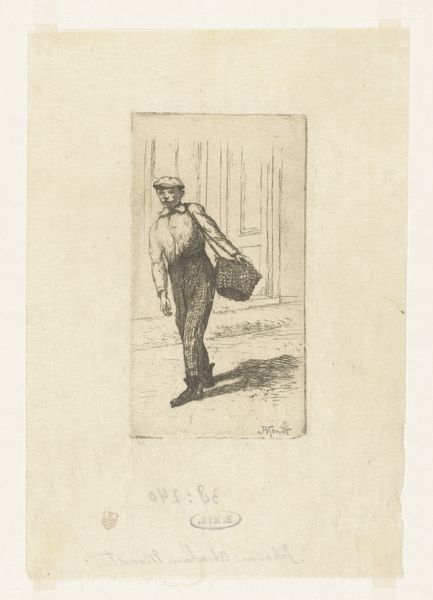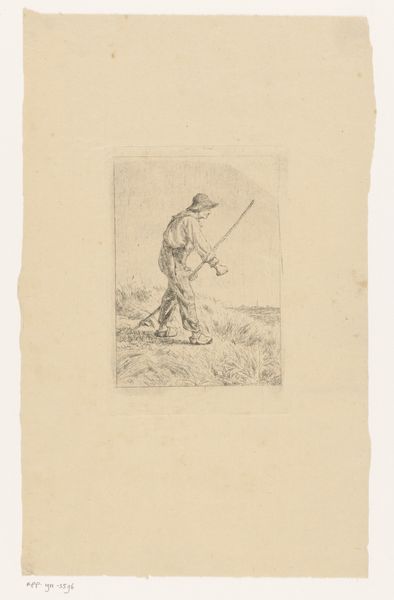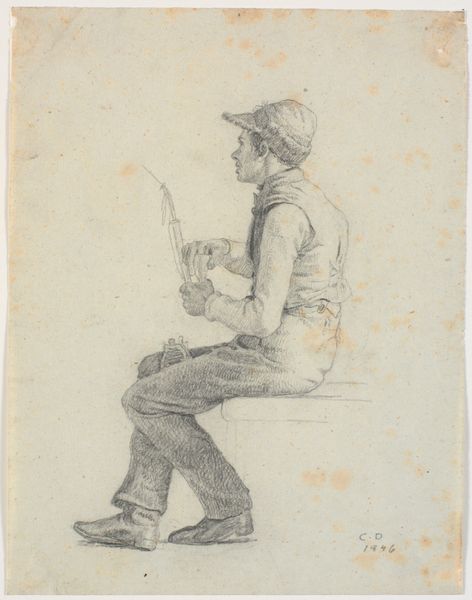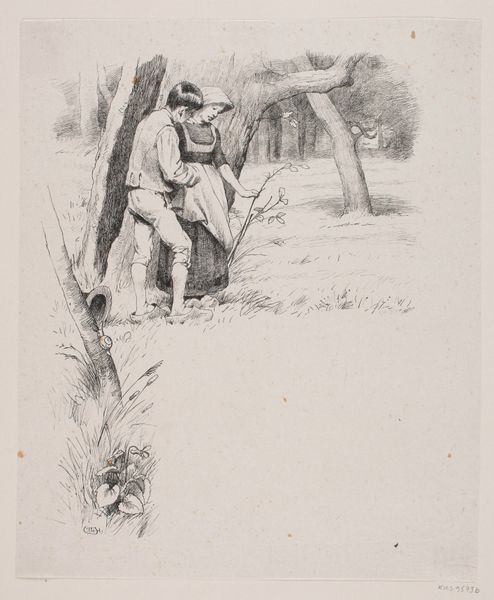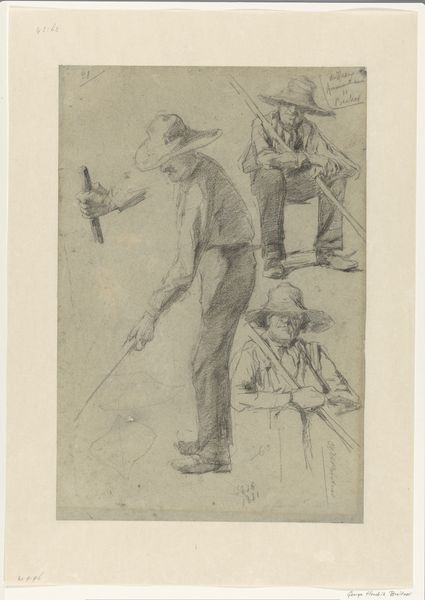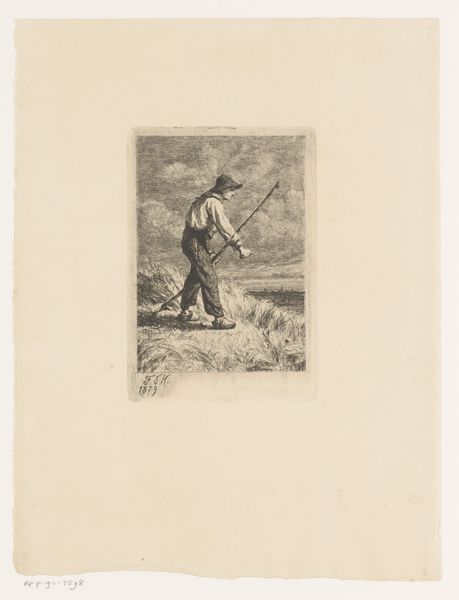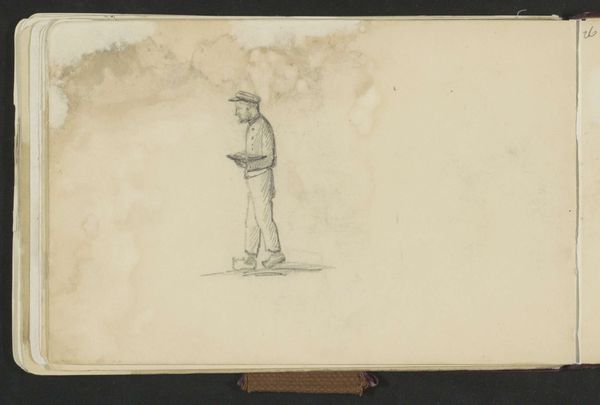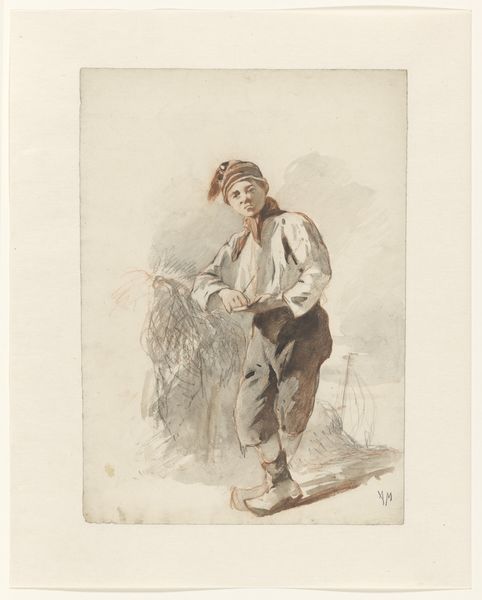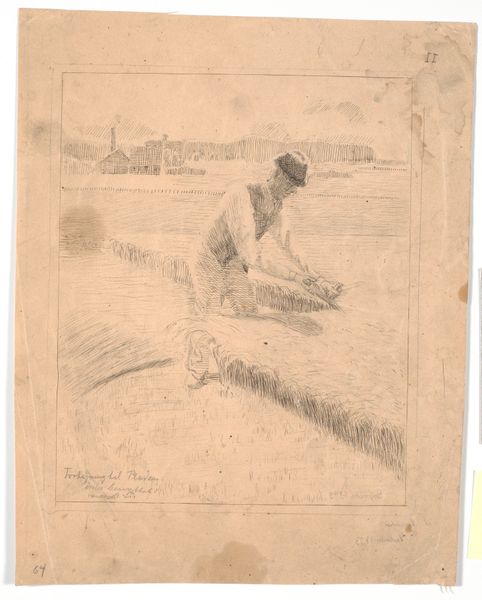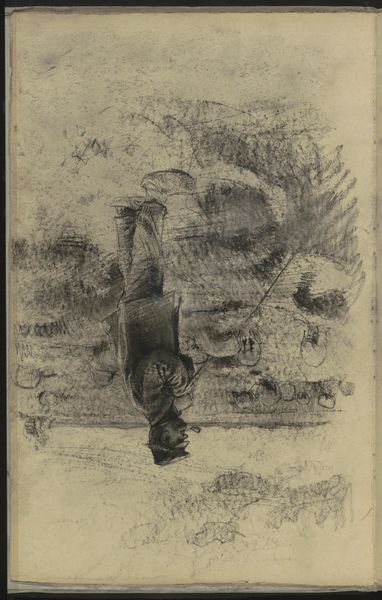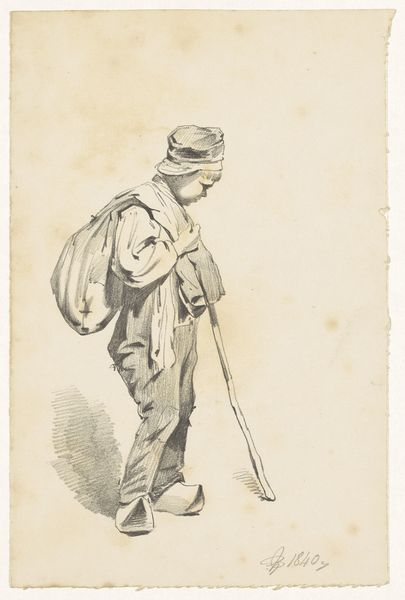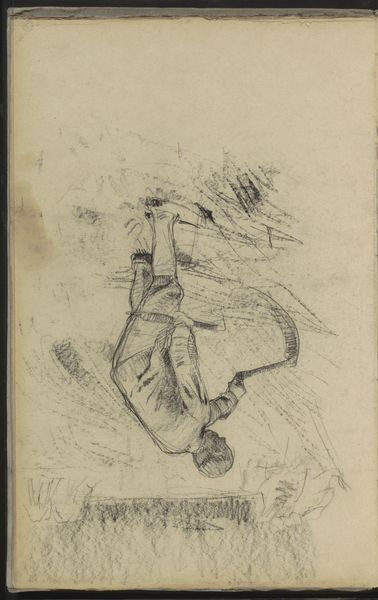
drawing, pencil
#
portrait
#
drawing
#
coloured pencil
#
pencil
#
academic-art
#
realism
Dimensions: overall: 28 x 15.1 cm (11 x 5 15/16 in.)
Copyright: National Gallery of Art: CC0 1.0
Curator: Thomas Eakins created this pencil and colored pencil drawing, "The Poleman in the Ma'sh," around 1881. The subdued palette gives the impression that we are observing the subject, nearly blending in with his marshy surroundings. What do you think? Editor: There's a stillness to it, a kind of solemn dignity in the man's pose. The composition, while seemingly simple, evokes a sense of quiet contemplation. It is really about the experience of this figure within the American landscape. Curator: It's interesting that you focus on dignity. Given Eakins's focus on realism, his depictions can be situated within the complex racial and class politics of late 19th-century America. How does the man's identity—likely working-class, perhaps a freedman or descendant—inflect your reading? The artwork reflects not only his presence but also the power dynamics inherent in that time. Editor: Well, knowing Eakins and the institutional art world he inhabited, I would like to think the painting moves beyond objectification. Eakins was dedicated to an authentic depiction of American life, capturing its nuances without romanticizing poverty. These works humanized those on the periphery. The lack of idealization can, paradoxically, become a radical artistic choice. Curator: Yes, Eakins consistently positioned himself against idealization, seeking accuracy in his representation. But even that act of "truth-telling" is a position with potential ethical implications. Do we really "see" the sitter’s reality? Or do we see what Eakins was interested in highlighting based on his world view? We can ponder about this forever... Editor: Absolutely, that interplay of observation, intention, and the sociopolitical framework is always relevant. I keep coming back to the feeling it evokes. It asks the viewer to recognize labor and existence in marginalized communities. Curator: A critical look reveals social structures and power relationships, while an emotional response helps humanize and encourage dialog across divides. It truly offers insight into historical contexts and intersectionality. Editor: Ultimately, the way Eakins chooses to depict ordinary people can create avenues for empathy in art spaces.
Comments
No comments
Be the first to comment and join the conversation on the ultimate creative platform.
